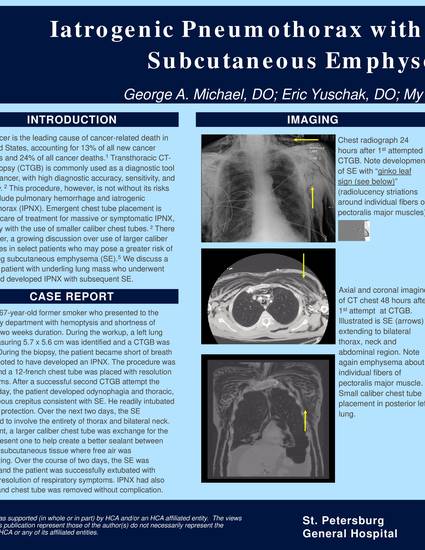
- hemoptysis,
- lung cancer,
- pneumothorax,
- subcutaneous emphysema hemoptysis,
- lung cancer,
- pneumothorax,
- subcutaneous emphysema
Lung cancer is the leading cause of cancer-related death in the United States, accounting for 13% of all new cancer diagnoses and 24% of all cancer deaths.1 Transthoracic CT-guided biopsy (CTGB) is commonly used as a diagnostic tool for lung cancer, with high diagnostic accuracy, sensitivity, and specificity. 2 This procedure, however, is not without its risks which include pulmonary hemorrhage and iatrogenic pneumothorax (IPNX). Emergent chest tube placement is standard care of treatment for massive or symptomatic IPNX, commonly with the use of smaller caliber chest tubes. 2 There is, however, a growing discussion over use of larger caliber chest tubes in select patients who may pose a greater risk of developing subcutaneous emphysema (SE).5 We discuss a case of a patient with underling lung mass who underwent GTGB and developed IPNX with subsequent SE.
Available at: http://works.bepress.com/my-myers/2/
